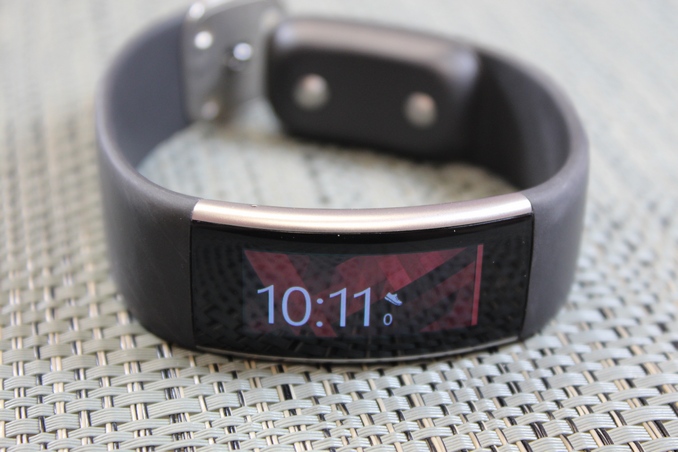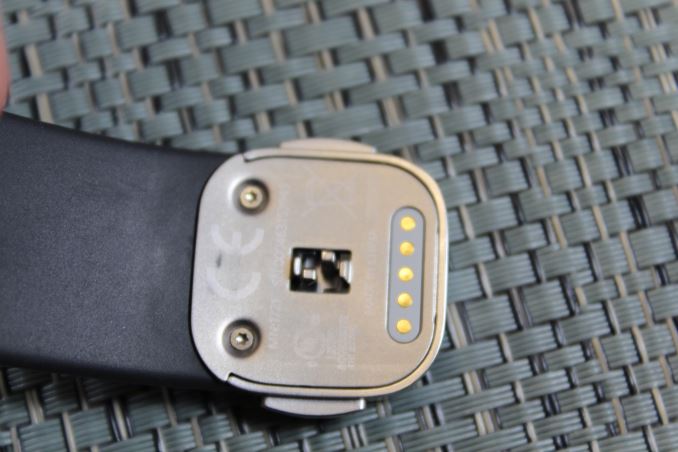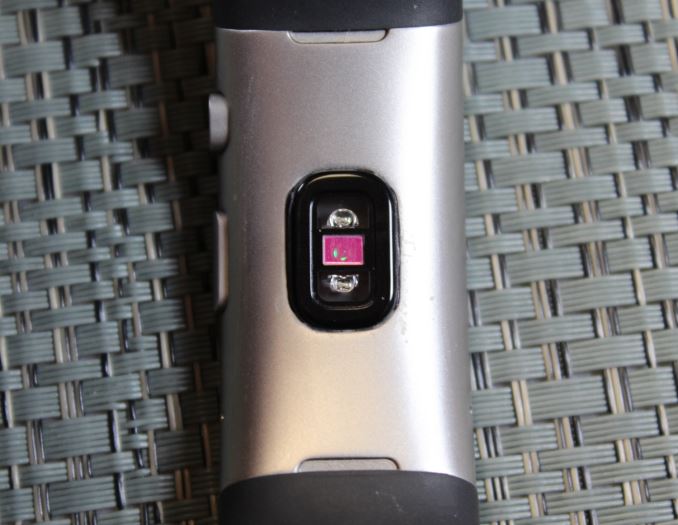The Microsoft Band 2 Review
by Brett Howse on November 30, 2015 8:00 AM EST- Posted in
- Wearables
- Microsoft
- Microsoft Health
- Microsoft Band

At the end of October in 2014, Microsoft surprisingly released a late night press release about a new device they were launching. It was the Microsoft Band, which is a fitness wearable that was a key component of their Microsoft Health service. It was their first real wearable, and it was packed with sensors to track everything from your heart rate to your sleep quality. At the Microsoft devices event in NYC on October 6th, Microsoft announced an updated version of the Band, known as Band 2. Its goal is to provide even more health insights, while being more comfortable and stylish than the original Band.
The first obvious question though is what the Microsoft Band actually is. In a time of everything from step counters to smart watches, where does the Band 2 (which will be called Band from here on out) fit in. Apple has the Apple Watch, Google has Android Wear, and Microsoft has the Band. But it’s not really a smartwatch, although it does do some of the things a smartwatch can do. It’s more than just a fitness band as well - it straddles the line of a 'smart fitness' band. You can do some of the things that a smartwatch can do, but not all, and it can do more things than most fitness bands. Like the Surface Pro 4 is a tablet that can replace your laptop, the Microsoft Band is a fitness band that can replace your smartwatch, except most probably do not have a smartwatch yet.
Design
The Band 2 makes some significant changes from the original, with the goal of a better fit, comfort, and improved ergonomics. It features a curved AMOLED display, which has a resolution of 320x128. This is a big improvement over the original band which had a flat display, and the new one does a much better job of fitting around your wrist than the original Band. Another nice change from the original band is that the entire display and surrounding bezel is now covered by Corning Gorilla Glass, which should alleviate the scratching that occurred on the original Band. Microsoft let me know that complaints of scratching on the display was almost always plastic bezels around the display, so the glass has been extended all the way to the edges as a result. The housing of the Band is now finished in silver metal, and keeps just two buttons on the side for actionable items. The large button in the center is power, and the smaller button on the side is the action button.
Another improvement over the original Band are the straps on the sides. On the first generation, Microsoft actually fitted the two 100 mAh batteries into the straps on the side, which made them kind of stiff, which is no longer the case this time around. In addition, the strap material is now a new material - a thermal plastic elastomer, silicone vulcanite. As with many materials, is comes across as a lot of big words, but the strap is a very smooth silicone rubber, and it doesn’t seem to get affected by sweat and oils on your arm. The clasp itself has not changed much, but it has the same silver finish as the main housing, and the battery has been moved to the lower half of the clasp. The upper clasp features a UV sensor, and the charging pins.
I feel like the design has come a long way from the original Band. The new curved display is the most obvious change, but the other design changes have also improved the overall look and especially feel of the Band on your wrist. The clasp is still fairly large, which might be an issue for some people. It would be nice to see a thinner clasp mechanism on a future version, although as this is where the battery is housed it may not be possible for a while.
| Microsoft Band Specifications | |||
| Microsoft Band 2 (2015) | Microsoft Band (2014) | ||
| Band | Thermal plastic elastomer silicone vulcanite with adjustable-fit clasp | Thermoplastic elastomer with adjustable-fit clasp | |
| Display | 12.8mm x 32mm AMOLED 320 x 128 pixels |
11mm x 33mm TFT 320 x 106 pixels |
|
| Sensors | Optical heart rate sensor 3-axis accelerometer/gyro Gyrometer GPS Ambient light sensor UV sensor Skin temperature sensor Capacitive sensor Galvanic skin response sensor Barometer |
Optical heart rate sensor 3-axis accelerometer/gyro Gyrometer GPS Ambient light sensor UV sensor Skin temperature sensor Capacitive sensor Galvanic skin response sensor |
|
| Additional Technology |
Microphone Haptic vibration Motor |
Microphone Haptic vibration Motor |
|
| Connectivity | Bluetooth 4.0 LE | Bluetooth 4.0 LE | |
| Compatibility | Windows Phone 8.1 Update, with Bluetooth 4.0 iOS 8.1.2 or later: iPhone: 4S, 5, 5C, 5S, 6, 6 Plus Many Android 4.3 – 5.0+ phones with Bluetooth |
Windows Phone 8.1 Update, with Bluetooth 4.0 iOS 7.1 or later: iPhone: 4S, 5, 5C, 5S, 6, 6 Plus Many Android 4.3 – 5.0+ phones with Bluetooth |
|
| Battery | Lithium-Polymer 48 hours | Dual 100mAh Lithium-Ion polymer 48 hours |
|
| Environment | Dust/Water | Dust and splash resistant | Dust and splash resistant |
| Temperature | 14°F to 104°F (-10°C to 40°C) |
14°F to 104°F (-10°C to 40°C) |
|
| Altitude | -300m to +4877m | 1200m | |
| Launch Price | $249 USD | $199 USD | |
The new Band has even added to the sensor total, with a barometer now available, serviced by a small hole in the side of the Band. Due to the holes for the barometer and microphone, the Band is not waterproof, although it is rated as water resistant. Internally, the holes have a fine mesh cloth which is fine enough to not let water through during temporary mild wet weather, but this is not enough protection for immersion such as swimming.
The Band itself is powered by a Cortex M4 processor. One would expect it might run Windows 10 IoT, at least with this version, but they still need a bit more power before they will move it to Windows 10, which is something to look for in the future. The UI is a custom specifically for the Band though, influenced by Windows 10 in its look and feel.













56 Comments
View All Comments
Laxaa - Monday, November 30, 2015 - link
Great review. Very neuanced and informative.It seems like perhaps the next version will be the one to get. This one seems like an improvement over the previous one, but it still looks a bit bulky and uncomfortable for my taste. I guess Windows 10 IOT will be implemented in the next one as well(seeing the advancements in wearable SoCs over the next year)
Arbie - Monday, November 30, 2015 - link
I've scanned the article twice and don't find mention of its accuracy, especially in heart rate and step counting. Those are pretty important, at least to me. I wouldn't consider buying this unless I knew it worked very well in those areas.N4g4rok - Monday, November 30, 2015 - link
Heart rate was accurate for me. I was hooked up to an EKG for a few hours one weekend and checked every now and again how they compared. They only ever differed by 2-3 BPM. Not sure how much value that'll add for you, but i figure i'd share.As for steps, i wore this and a FItbit Charge HR simultaneously, and the fitbit counted ~50 steps more on average throughout the day on a 8000+ steps day.
NXTwoThou - Monday, November 30, 2015 - link
With the reviews of Band 1, it was found that until you did a walk/run with GPS turned on, it doesn't know your stride. It's pretty close though. Doing a single 1/2 mile walk with GPS fine tunes it.N4g4rok - Monday, November 30, 2015 - link
"The Band seems capable of knowing when I am asleep, so it would be nice if I would not have to enable the function when I’m going to sleep, and then disable it when I wake up. This is a minor issue, but would make the sleep function quite a bit better since it’s very easy to forget to turn it on before you go to sleep, and as easy to forget to turn it off when you wake up."If you fall asleep with it on, it takes it's best guess. this shows up on the app as 'Sleep(Detected).' Some of the metrics like 'Time to Fall Asleep' might be a little off as a result.
NeoteriX - Monday, November 30, 2015 - link
Not all GPS implementations are the same, some have faster cold lock times and deal with interference differently. Others also use other GPS-type systems like GLONASS to augment the number of available satellites for GPS even further.It might just be useful from a superficial perspective to walk around a few blocks with the test device along with a few other GPS devices like cell phones or sport trackers (e.g Garmin) just to see the relative GPS competency.
moozooh - Monday, November 30, 2015 - link
You can't swim with it? Well, that's dumb. I have a watch and a GPS navigator with barometer sensors, and they're both built to be more water-resistant than my own body. And I also have a tablet that is water-resistant despite the openings for the microphone and two speakers.WTF is wrong with you, Microsoft.
frostyfiredude - Monday, November 30, 2015 - link
Swimming with that would be so incredibly bad, it's got some weight and bulk to it. Seems like a good way to throw ones stroke completely off balanceLord of the Bored - Tuesday, December 1, 2015 - link
Hey, in my area you can't take it OUTSIDE in the summer. That max temperature rating literally made me laugh.FEAR THE SUN.
genericnyguy - Monday, November 30, 2015 - link
The Band 2 has a major flaw in step tracking (with an impact on calories, running speed w/ GPS off, connected app data, etc.). Pages full of complaints on the Microsoft support forums with no response from Microsoft as to a fix:http://answers.microsoft.com/en-us/band/forum/msba...